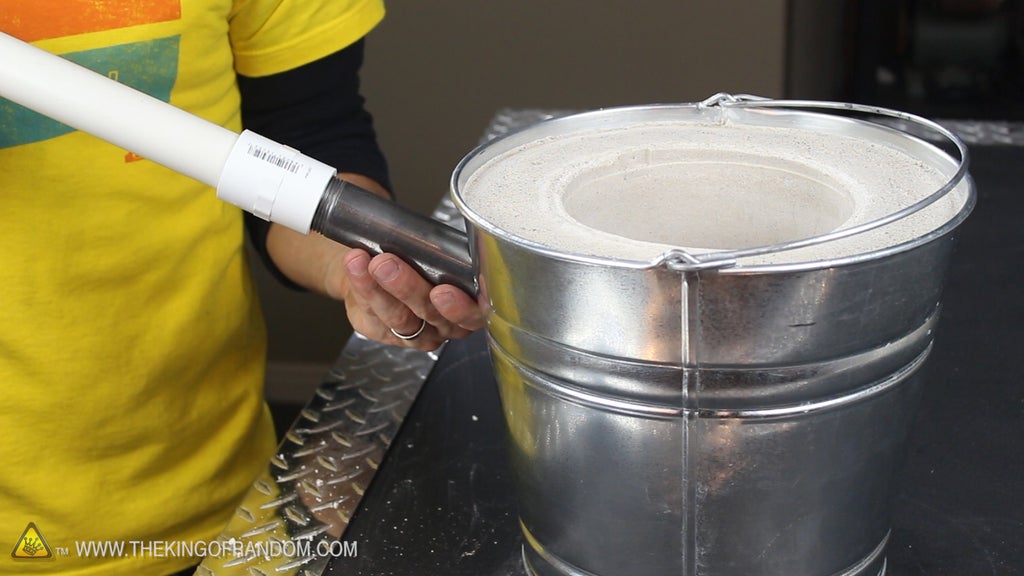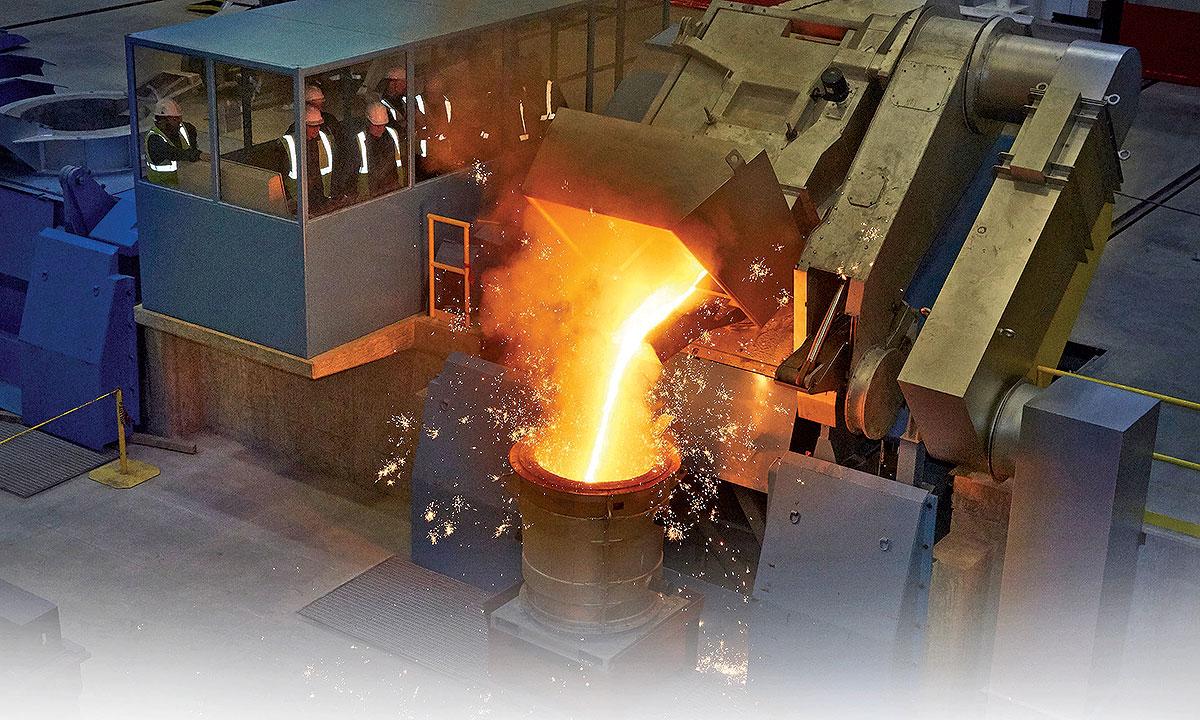Revealing the Complexities of Layout and Production at a Metal Foundry
The style and manufacturing procedures at a metal foundry entail a collection of intricate steps. Each stage, from selecting basic materials to melting and casting, plays a crucial function in the final product. Metal Foundry. Precision and quality assurance are paramount in this industry. As technology developments, new developments are emerging. These growths may redefine conventional practices. What effects do these adjustments hold for the future of steel foundries?
The Melting Process: Transforming Raw Materials Into Liquid Metal
The melting process acts as the important initial action in changing basic materials right into liquid metal, a treatment crucial for foundry procedures. This phase begins with the mindful option of steels, which might include iron, light weight aluminum, or copper, relying on the preferred end product. Each product is assessed for pureness and make-up to ensure excellent melting conditions.

As the metals reach their melting point, they transform from solid to liquid, allowing for additional refinement. This process can also consist of the elimination of impurities with slag formation, guaranteeing the high quality of the fluid steel. Inevitably, the effective conclusion of the melting procedure lays the structure for subsequent metalworking procedures.
Molding Strategies: Shaping Metal With Precision
Complying with the melting process, the following phase in steel foundry procedures includes molding strategies that shape the fluid steel right into preferred kinds. Various methods are employed, each chosen based on the certain demands of the task. Sand spreading, one of the most typical techniques, uses a blend of sand and binder to develop mold and mildews that can be quickly shaped and recycled. An additional method, investment casting, includes developing a wax pattern that is coated in a ceramic shell, permitting complex styles and high accuracy.
Pass away spreading, in comparison, utilizes high-pressure to inject molten steel into steel mold and mildews, leading to resilient and consistent items. In addition, the choice of molding technique impacts the cooling rate, surface area coating, and dimensional accuracy of the last product. Subsequently, understanding these methods is important for optimizing style and making certain the effective manufacturing of steel parts tailored to certain applications.
Casting Methods: From Prototype to Manufacturing
Many casting methods are used in steel factories to change from model growth to full-scale manufacturing. Among these techniques, sand casting sticks out for its flexibility and cost-effectiveness, making it optimal for both tiny and big manufacturing runs. Investment spreading, recognized for its precision, is frequently used for intricate geometries, permitting great information in the end product. Die casting, suitable for high-volume production, utilizes liquified metal injected right into mold and mildews, offering superb surface area coating and dimensional accuracy.

Quality Control: Making Sure Quality in Every Pour
While the casting procedure can differ substantially between techniques, maintaining extensive quality assurance is vital to determine that every put fulfills the called for standards. Quality control in a metal foundry includes a series of systematic checks and evaluations designed to identify defects early in the production process. This includes meticulous inspections of resources, monitoring of melting temperatures, and analyses of mold and mildew honesty.
Foundry workers employ different testing techniques, such as non-destructive screening and dimensional verification, to identify that castings achieve preferred specifications. In addition, adherence to developed sector requirements and certifications improves the integrity of the last product.
Responses loopholes are additionally important; any type of discrepancies noted during high quality analyses are assessed to fine-tune procedures and minimize future errors. Inevitably, a society of quality guarantee fosters not just consumer complete satisfaction however additionally a credibility for quality in the competitive landscape of steel production.
Advancements and Technologies: The Future of Metal Foundries
The landscape of metal factories is swiftly developing, driven by developments in technology and cutting-edge techniques. Automation and robotics are transforming standard workflows, improving performance and precision during manufacturing. Automated pouring systems and robotic arms decrease human error, causing better outcomes. Furthermore, the integration of artificial intelligence is allowing anticipating maintenance, maximizing tools performance, and minimizing downtime.
Additive production is emerging as a game-changer, permitting quick prototyping and the production of complicated geometries that were formerly unattainable. This technology helps with the personalization of steel components, providing to certain customer needs without substantial dead time.
Sustainability is additionally a vital emphasis, with shops embracing greener techniques, such as reusing scrap metal and utilizing energy-efficient furnaces. These innovations not just enhance performance yet additionally straighten with global efforts in the direction of eco accountable production, making certain the future of steel foundries continues to be competitive and durable in an altering industrial landscape.
Regularly Asked Concerns
What Kinds of Metals Are Frequently Made Use Of in Factories?
Typical steels utilized in foundries include aluminum, cast iron, bronze, brass, and steel (Aluminum Foundry). Each metal possesses special properties, making them appropriate for various applications in industries such as vehicle, aerospace, and building, to name a few
Just How Do Foundries Handle Waste and Environmental Influence?
Shops manage waste and environmental impact by applying reusing programs, utilizing innovative filtration systems, and sticking to rigorous governing dig this criteria. They frequently purchase sustainable innovations to reduce discharges and advertise responsible source usage throughout their look these up operations.
What Safety Steps Remain In Location for Employees?
Factories execute various safety and security procedures for employees, including individual safety tools, appropriate ventilation systems, routine security training, emergency situation reaction procedures, and rigid adherence to work-related health policies to minimize risks connected with unsafe materials and devices.
The length of time Does the Entire Manufacturing Process Generally Take?
The whole production process usually takes numerous weeks, relying on the complexity of the design and the materials made use of. Variables such as mold and mildew preparation, melting, and cooling time significantly affect the overall duration of production.
What Are the Main Tests Dealt With by Metal Shops Today?
Metal foundries today face challenges such as increasing material expenses, varying need, ecological regulations, experienced labor lacks, and maintaining quality assurance. These concerns complicate production effectiveness and profitability in a progressively competitive market.
The design and manufacturing procedures at a metal foundry involve a series of detailed actions. The melting process serves as the vital initial step in changing raw materials into liquid steel, a procedure vital for foundry procedures. Following wikipedia reference the melting procedure, the next phase in steel foundry operations involves molding techniques that shape the fluid steel right into preferred types. Many spreading methods are used in metal factories to change from prototype development to full-blown production. Quality control in a metal foundry incorporates a series of systematic checks and analyses created to recognize problems early in the manufacturing process.